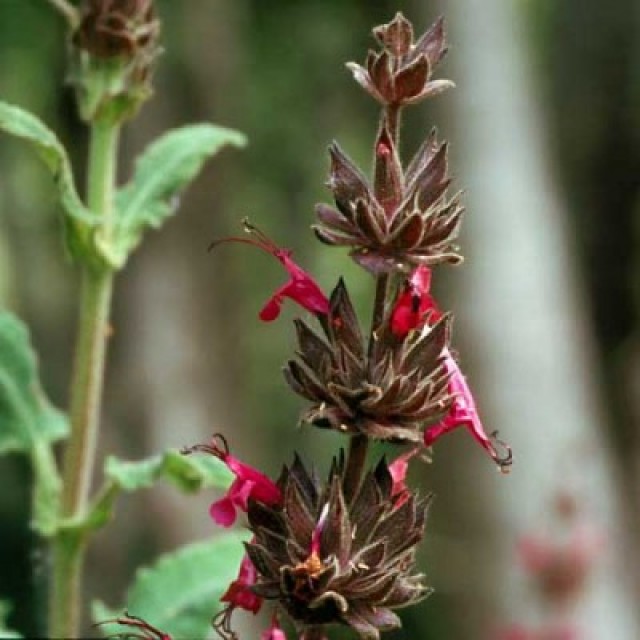COMMON NAME
Hummingbird sage
SCIENTIFIC NAME
Salvia spathacea
Plant family
Mint (Lamiaceae)
Plant group
Wildflowers and Herbs
This herbaceous plant has a woody base and a somewhat sprawling habit with upright flowering stems. The leaves are broad, quilted, light-green, and aromatic. The flower spikes rise above the leaves and bear large, tubular, magenta colored flowers. As its name suggests, this plant is often visited by hummingbirds.
56 reports
21+
OBSERVERS
56+
OBSERVATIONS
Identification hints
There are many species of true sage (Salvia) in California. Hummingbird sage is distinctive in not having spine-tipped leaves, and its green leaves which contrast with the grayish white leaves of other species. The flowers of S. spathacea are red-magenta-salmon, whereas the flowers of S. aethiopis are yellow and the flowers of S. verbenacea are blue to pinkish purple.
Did you know?
As the name implies, this plant attracts hummingbirds. While the hummingbirds hover at the flower to forage for nectar (which is located at the base of the floral tube), pollen can be deposited on the bird's head by the exserted anthers. Similarly, pollen already on the bird's head can be deposited onto the exserted stigma. It is thought that dense hairs on the underside of leaves (such as for Hummingbird Sage) help to maintain a stable microclimate around the leaves' tiny pores (stomata), thereby reducing water loss out of the stomata and lowering water stress throughout the plant.
DISTRIBUTION IN TH U.S.
California
HABITAT
Common throughout coastal California from Baja California in Mexico north to San Francisco. Found in many plant communities less than 2600 ft (800 m) elevation, including chaparral, coastal sage scrub, and oak woodland.
ATTRIBUTES
Leaves
The arrow-shaped aromatic leaves are 3.15 to 7.8 in (8 to 20 cm) long with densely-hairy lower leaf surfaces and round-toothed margins. The upper leaf surface can be sparsely hairy
Flowers
The flowers are found in dense, globe-shaped clusters. The floral tube and its lobes are white to light blue to lavender, occasionally rose colored. The upper “lip” of the tube is comprised of two petal lobes and the lower “lip” is comprised of three small lobes. The flowers are bisexual, which means they have both male and female reproductive organs. At the peak of flowering, the flower clusters will include closed buds, open fresh flowers, and drying flowers that are developing into fruits, all in close proximity to each other.
Fruits
The fruit is a tiny, hard, brown nutlet, 0.13 to 0.25 in (3.5 to 6.5 mm) in length and width.
Bloom Time
Although Hummingbird Sage typically flowers during the spring months (March to May), it can also be found flowering in the preceding months depending on local environmental conditions. Fruits and seeds ripen throughout the spring and summer.
See Menu
- 2021 Chicago Botanic Garden. All Rights Reserved.
-
Creative Commons
BY-NC-SA 4.0 - Terms of Use
- Privacy Policy
- Data Sharing and Citation Policies
- 2021 Chicago Botanic Garden. All Rights Reserved.



